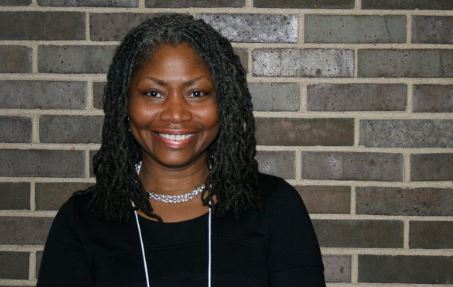
More than half a century after Civil Rights Act, work still to be done
More than half a century after Civil Rights Act, work still to be done in quest for equal rights, says political scientist DePaul University’s Valerie Johnson provides historical perspective on the ‘60s
Newswise — CHICAGO — While the U.S. civil rights movement is often said to have ended in 1968, the continued fight for equal rights for all Americans can be seen in today’s protests, said Valerie Johnson, an associate professor and chair of DePaul University’s Political Science Department in the College of Liberal Arts and Social Sciences.
Johnson, author of the book “Black Power in the Suburbs: The Myth or Reality of African American Suburban Political Incorporation” and co-editor of “Power in the City: Clarence Stone and the Politics of Inequity,” researches urban and African-American politics.
In this Q&A, Johnson discusses the civil rights movement and how African-American pop culture influenced it, looks at issues still facing the country today, and compares current protesters to ones from the 1960s.
Q: As someone who has researched the civil rights movement, how did the 1960s — and in particular 1968 — help shape the country going forward as pertaining to race relations?
A: The year, 1968, is a pivotal moment in American history. For some, it stands as the end of the civil rights movement (1955-1968) — a movement that led to the attainment of basic citizenship rights, emanating from monumental legislation such as the 1964 Civil Rights Act, the 1964 ratification of the 24th Amendment to the U.S. Constitution, the 1965 Voting Rights Act, and the 1968 Civil Rights Act, which contained a fair housing provision. For others it represents a brief respite in the quest for socioeconomic and political rights that continues for traditionally underrepresented groups to this day.
Q: There’s been significant coverage and praise of the marches, demonstrations and protests that the civil rights movement is known for, but how did African-American pop culture play a role in the movement?
A: What I remember most was the freedom songs of the 1960’s. Artists such as Curtis Mayfield, Nina Simone, the Motown sound, Aretha Franklin, James Brown were the soundtrack of the 1960s, and helped to raise consciousness and awareness. Although some may beg to differ, today’s music doesn’t have that same urgency. When Curtis Mayfield belted out, “we’re moving on up,” I felt it. It signaled a period of hope and anticipation — hope that has oft times been dashed, as the country is once again divided on the race question.
Q: What were the general hopes of African-Americans at the end of 1968?
A: The close of the civil rights movement signaled a time of repositioning for African-Americans and other marginalized groups, and the hope that America would finally live up to its professed values of democracy and equal opportunity for all. Because of the aforementioned legislation, members of traditionally underrepresented groups finally received the rights that white Americans had enjoyed since the nation’s founding.
Q: What issues might have caused some of that hopefulness to dissipate?
A: What was not understood or fully anticipated in 1968 was the role that economics would play in restricting true equality of opportunity. Although African-Americans had the right to public accommodation and could vote, they remained economically disadvantaged due to the cumulative effects of past discrimination and racism. This economic deficit continues to define the lives of African-Americans 50 years later and has stunted the country’s movement to true racial equality.
Q: In looking at the civil rights activists and protesters of today, how do they compare and contrast to the ones who fought for social justice in the 1960s?
A: Although we place the civil rights movement in the 1955-68 period, the reality is that it continues to this very day. There are of course more people of color in leadership positions, but at all socioeconomic levels, racial disparities remain. As a result, the tactics and strategies of leadership and civil rights activists have not changed. The leaders, civil rights activists and protesters are a mirror image of those who existed in previous decades, the only difference owing to the salience of civil and economic rights. No longer is civil rights a salient issue in our nation. In fact, some Americans must be convinced that inequality and racism persists. They overwhelmingly believe that the civil rights movement rectified the effects of past racist policies and practices. It did not, and people of color are generally very clear about the subtle and not so subtle ways that inequality endures.







